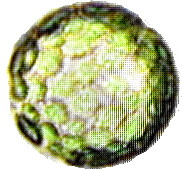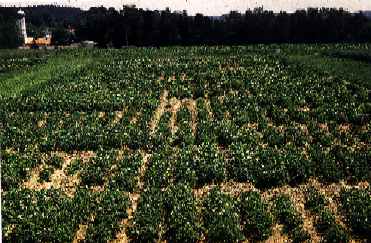Effects of Cytoplasmic Configurations in Potato + Distinct parental cytoplasms were combined in symmetric tetraploid hybrids of potato by somatic cell fusion. This allowed in the presence of nearly isogenic nuclear genomes to estimate the contribution of mitochondrial (mt) and chloroplast (cp) genomes to yield parameters. Analysis of mt-cp configurations in 144 potato cultivars [2n=4x], a reciprocal population [2n=2x], di-haploid fusion parents [2n=2x] and their respective hybrids [2n=4x] made visible the effects of different cytoplasmic backgrounds and mitochondrial subgenomic rearrangements. Evaluation of cytoplasmic types lead to the assumption, that in starch content the ´wild type´ cytoplasms a and g have a significant advantage to other cytoplasmic types (b, d, e). Genotypes identified by our markers as mt type g were associated with cytoplasmic male sterility. In seed production di-haploids with mt- e were superior to others. In hybrids an interaction of starch content within different mt-cp combinations could be found. In general the highest field performance, measured in starch yield was associated with such cytoplasmic configurations which appeared to a high frequency within a population. This fact is explained by a selection advantage of clones with optimized organellar segregation allready during in vitro phase.

Abstract Field 
Frequencies Cytoplasm Types 
Field trials 
Fusion Combining Ability .

.
.